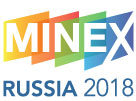- Home
- Ian Lipton

Ian Lipton
Principal Geologist, Geometallurgy Practice Leader
AMC Consultants
Speaker profile
Ian Lipton has 35 years of experience in mining geology, resource evaluation, and exploration. Ian’s mining expertise includes resource estimation, grade control, feasibility studies, technical audits and reviews, due diligence studies, independent technical specialist reports, and valuations. Ian’s commodity experience includes gold, iron ore, copper, lead, zinc, nickel, coal, chromite, vanadium, uranium, phosphate, potash, limestone, manganese, and bauxite. Ian has been promoting geometallurgy for project improvement for over 15 years and has been involved in a variety of geometallurgical investigations including throughput estimation, hardness and rock strength measurement, assessing the correlations between downhole geophysical logs, drill penetration data and ore hardness, sulphide flotation studies, and using multi-element geochemistry to characterize ore beneficiation processes. Ian is the author of a variety of technical papers and an accomplished trainer. He has presented mine geology and grade control training courses to mining professionals in Australia, Sweden, Tanzania and Brazil and a geometallurgy course in Indonesia.
Presentation summary
Connecting Metallurgy to Geology
Geometallurgy is the foundation for optimising mining projects in the twenty-first century. A project that does not consider the geology of the deposit, mining, processing and waste disposal in a holistic manner, is unlikely to be delivering the best financial return to its owners. In this presentation, I present a framework for geometallurgical studies and discuss sources of geometallurgical data. Examples are provided to show how geological and metallurgical data can be correlated and used to establish predictive relationships. This allows the response of the ore to the processing flow sheet to be forecasted. Modeling these predictive relationships in three dimensions allows a project to be optimised using all the characteristics of the ore that drive cost and revenue, not just the grade. Importantly, geometallurgy can be applied from discovery, through pre-feasibility and feasibility and in to day to day operations, to improve project design, increase profitability and reduce risk.
Predicting the comminution response of ores using Equotip hardness tester
The geometallurgical approach to orebody definition and mine planning seeks to map the response of ore to blasting, comminution and mineral extraction in three dimensions. The production-scale response cannot be measured directly but can be estimated from tests conducted on individual samples. This paper examines the use of the Equotip 3 hardness tester, a small, portable device that has been demonstrated to be an effective tool for the measurement of rock hardness. The tester is non-destructive and can be used during a drilling campaign to acquire large amounts of data from regular drill core at low cost. Case histories from two very different mineral deposits are presented; the Bowdens silver project in Australia, and the Chertovo Koryto gold deposit in Russia. Equotip surveys were carried out as part of geometallurgical programmes that integrated traditional logging and sampling with geochemical and metallurgical testing. The relationship of the Equotip data to geological logs, geochemistry, and bench scale comminution test results is examined.
